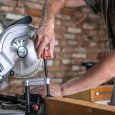
Introduction
When it comes to woodworking and DIY projects, having the right tools can make all the difference. Two popular choices among craftsmen and DIY enthusiasts are the skill saw and the circular saw. These power tools are versatile and can tackle a wide range of cutting tasks, but they each have their own strengths and weaknesses. In this article, we will dive deep into the world of skill saws and circular saws, comparing them in various aspects to help you make an informed decision for your next project.
Understanding Skill Saws
What is a Skill Saw?
A skill saw, often referred to as a sidewinder or a traditional circular saw, is a handheld power tool designed for making straight cuts. It is lightweight, compact, and easy to maneuver, making it an excellent choice for beginners and professionals alike. Skill saws come in both corded and cordless varieties.
Pros of Using a Skill Saw
- Portability: Skill saws are highly portable, allowing you to work in tight spaces or on the go.
- Ease of Use: They are user-friendly and great for those new to woodworking.
- Precision: Skill saws excel at making accurate, straight cuts.
- Affordability: They are generally more budget-friendly than circular saws.
Cons of Using a Skill Saw
- Limited Cutting Depth: Skill saws have a shallower cutting depth compared to circular saws.
- Not Ideal for Bevel Cuts: Making bevel cuts can be challenging with a skill saw.
Exploring Circular Saws
What is a Circular Saw?
A circular saw, on the other hand, is a versatile cutting tool with a round, toothed blade. It is available in various types, including worm drive and sidewinder models. Circular saws are known for their power and cutting depth.
Pros of Using a Circular Saw
- Cutting Depth: Circular saws can cut through thicker materials with ease.
- Bevel Cuts: They are excellent for making bevel cuts for various woodworking applications.
- Power: Circular saws are more powerful, making them suitable for heavy-duty tasks.
- Durability: They are built to withstand tough working conditions.
Cons of Using a Circular Saw
- Heavier: Circular saws tend to be heavier and less portable.
- Costlier: They are generally more expensive than skill saws.
- Steep Learning Curve: Beginners may find circular saws intimidating to use initially.
Which One Should You Choose?
Factors to Consider
When deciding between a skill saw and a circular saw, consider the following factors:
- Project Type: What kind of projects do you frequently undertake? Skill saws are ideal for basic cuts, while circular saws excel at complex woodworking tasks.
- Portability: Do you need a tool that you can easily carry to different job sites? If so, a skill saw might be your best bet.
- Budget: Consider your budget. Skill saws are more budget-friendly, while circular saws are an investment.
- Skill Level: Are you a beginner or an experienced woodworker? Skill saws are beginner-friendly, whereas circular saws require more skill.
Conclusion
In conclusion, both skill saws and circular saws are valuable tools with their unique advantages. Your choice should depend on your specific needs and skill level. If you’re just starting in the world of DIY projects, a skill saw might be the perfect choice. However, if you require more power and versatility, a circular saw is the way to go.
Remember, the best tool for the job is the one that helps you achieve your woodworking goals efficiently and safely.
FAQs
- Are skill saws and circular saws the same thing? No, they are not the same. Skill saws are a type of circular saw, but circular saws encompass a broader range of saws with circular blades.
- Can I use a skill saw for cutting plywood? Yes, skill saws are suitable for cutting plywood, especially if you need straight cuts.
- Do I need a lot of experience to use a circular saw? While circular saws can be intimidating for beginners, with proper guidance and practice, anyone can learn to use them effectively.
- Are cordless circular saws as powerful as corded ones? Cordless circular saws have come a long way in terms of power, but corded models still tend to be more powerful for heavy-duty tasks.
- What safety precautions should I take when using these saws? Always wear appropriate safety gear, keep your hands away from the blade, and follow the manufacturer’s safety guidelines when using skill saws or circular saws.




